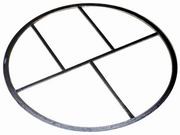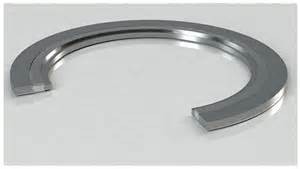Spiral wound gaskets are mechanical seals designed to prevent leakage between two mating surfaces, such as flanges, in high-pressure and high-temperature applications. They consist of a V-shaped metal strip and a filler material, wound together in a spiral pattern. This construction allows for excellent resilience, durability, and adaptability to various industrial environments, making them a preferred choice in sectors like oil and gas, chemical processing, and power generation.
Understanding the technical specifications of spiral wound gaskets is crucial for selecting the right product for your needs. Below are the primary parameters outlined in lists and a detailed table for clarity.
| Parameter | Options / Range | Description |
|---|---|---|
| Metal Types | Stainless Steel 304, 316, Carbon Steel, Inconel, Monel | Selected for corrosion resistance and strength; e.g., 316 SS for acidic environments. |
| Filler Types | Graphite, PTFE, Ceramic, Mica | Graphite offers high-temperature tolerance; PTFE is chemical-resistant. |
| Inner/Outer Rings | Carbon Steel, Stainless Steel, None | Rings improve alignment and prevent gasket damage during installation. |
| Standard Sizes (ID) | 15 mm to 1500 mm | Custom sizes available for non-standard flange configurations. |
| Thickness | 3 mm to 5 mm (standard) | Thicker gaskets may be used for higher flexibility in uneven surfaces. |
| Pressure Rating | Up to 3000 psi (20.7 MPa) | Designed to withstand extreme pressures without failure. |
| Temperature Range | -200°C to 1000°C | Varies with materials; e.g., graphite fillers handle higher temperatures. |
| Standards | ASME B16.20, API 601, EN 1514-1 | Ensures compliance with industry safety and performance norms. |
Spiral wound gaskets are versatile and used across multiple industries due to their reliability. Common applications include:
What materials are commonly used in spiral wound gaskets?
Spiral wound gaskets typically use metal strips like stainless steel (304 or 316) for strength and corrosion resistance, combined with fillers such as graphite for high-temperature applications or PTFE for chemical resistance. The choice depends on the specific operating environment, including factors like pH levels, temperature extremes, and pressure requirements.
How do I select the right spiral wound gasket for my application?
Selection involves evaluating several parameters: the flange type and size (refer to standards like ASME B16.5), operating pressure and temperature, fluid compatibility with gasket materials, and any regulatory requirements. Consulting manufacturer datasheets or an engineer is recommended to ensure optimal performance and safety, as incorrect selection can lead to leaks or failures.
Can spiral wound gaskets be reused?
No, spiral wound gaskets are designed for single use. Once compressed during installation, the metal and filler materials undergo deformation to create a seal. Reusing them can compromise integrity due to reduced resilience and potential damage, increasing the risk of leakage. Always replace with a new gasket during maintenance.
What is the difference between spiral wound gaskets and other types, like ring gaskets?
Spiral wound gaskets offer superior flexibility and adaptability compared to solid ring gaskets (e.g., RTJ rings), which are rigid and require high bolt loads. The spiral design allows for better sealing on imperfect flange surfaces and handles thermal cycling more effectively. They are ideal for a wider range of pressures and temperatures, whereas ring gaskets are often used in ultra-high-pressure scenarios.
How should spiral wound gaskets be installed and torqued?
Installation requires clean, damage-free flanges. Place the gasket centered between flanges, ensuring no misalignment. Follow a cross-pattern torque sequence when tightening bolts to apply even pressure, referencing the manufacturer's recommended torque values based on gasket size and material. Over-torquing can crush the gasket, while under-torquing may cause leaks. Use a torque wrench for accuracy.
Are there environmental considerations for spiral wound gaskets?
Yes, material selection should account for environmental factors. For instance, graphite fillers are suitable for oxidizing atmospheres but may not be ideal in certain chemical exposures. Additionally, disposal should follow local regulations, as some metals and fillers might be recyclable or require special handling to minimize environmental impact.
What maintenance practices extend the life of spiral wound gaskets?
Regular inspections for signs of wear, corrosion, or leakage are essential. Ensure proper flange alignment and surface condition before installation. Avoid exposing gaskets to conditions beyond their rated specifications, and store them in a dry, clean environment to prevent degradation before use. Following manufacturer guidelines for installation and operation maximizes longevity.






